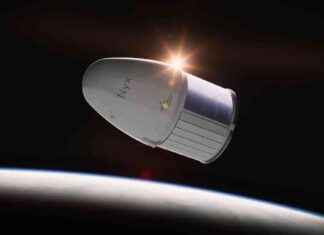In a scientific first, researchers have developed a mathematical equation to capture mankind’s impact on Earth — finding that humans are causing the climate to change 170 times faster than natural forces.
The Australian National University announced the discovery on Sunday, claiming evidence shows human-caused greenhouse gas emission during the past 45 years has increased the rate of temperature rise to 1.7 degree Celsius per century, “dwarfing the natural background rate,” according to Will Steffen, a climate change expert and ANU professor.
“Over the past 7,000 years the primary forces driving change have been astronomical — changes in solar intensity and subtle changes in orbital parameters, along with a few volcanoes,” Steffen said in a news release announcing the equation. “They have driven a rate of change of 0.01 degrees Celsius per century.”
Steffen and Owen Gaffney, a climate analyst at the University of Stockholm, co-authored a study on the equation that was published last week in The Anthropocene Review. They found human activity in the past six decades have “driven exceptionally rapid rates of change” throughout the planet, with it now rivaling the great forces of nature in driving changes to the Earth system.
“We are not saying the astronomical forces of our solar system or geological processes have disappeared, but in terms of their impact in such a short period of time they are now negligible compared with our own influence,” Steffen said. “Crystallizing this evidence in the form of a simple equation gives the current situation a clarity that the wealth of data often dilutes.”
Steffen continued: “It also places the contemporary human impact in the context of the great forces of nature that have driven Earth system dynamics over billions of years.”
Gaffney said he and Steffen developed the equation by “homing in on the rate of change of Earth’s life support system,” including the atmosphere, oceans, forests, wetlands, waterways and ice sheets.
“That rate of change has been anything but steady of late,” Gaffney wrote in New Scientist. “If we take a baseline of the last 7,000 years, until recently, global temperature decreased at a rate of 0.01 [degrees Celsius] per century. The current rate (last 45 years) is a rise of 1.7 degree Celsius per century – 170 times the baseline and in the opposite direction. The warmest 12 years since records began have all occurred since 1998.”
The rate of carbon emissions in the atmosphere is arguably the highest in 66 million years, according to Gaffney, and a “staggering loss of biodiversity” in recent decades led researchers in 2015 to argue that the Anthropocene geological era is the third stage in the evolution of Earth’s biosphere.
“Pulling this together, we conclude that the rate of change of the Earth system over the last 40 to 50 years is a purely a function of industrialized societies,” Gaffney wrote.
But worry not, there’s still time to save humanity from catastrophic climate change, although the clock is definitely approaching the zero hour, Steffen claims.
“The global economy can function equally well with zero emissions,” Steffen said. “Research shows we can feed nine billion people – the projected world population by 2050 – and reduce greenhouse gas emissions at the same time.”
Gaffney, meanwhile, said mankind shouldn’t ignore the findings or be lulled into a false sense of security that everything will be OK.
“We should be concerned,” he wrote. “Far from living on a deeply resilient planet, we live on a planet with hair triggers. Industrialized societies are fumbling around with the controls, lulled into a false sense of security by the deceptive stability of the Holocene, the last 11,700 years. Remarkably and accidentally, we have ejected the Earth system from the interglacial envelope and are heading in to unchartered waters.”
Our editors found this article on this site using Google and regenerated it for our readers.





